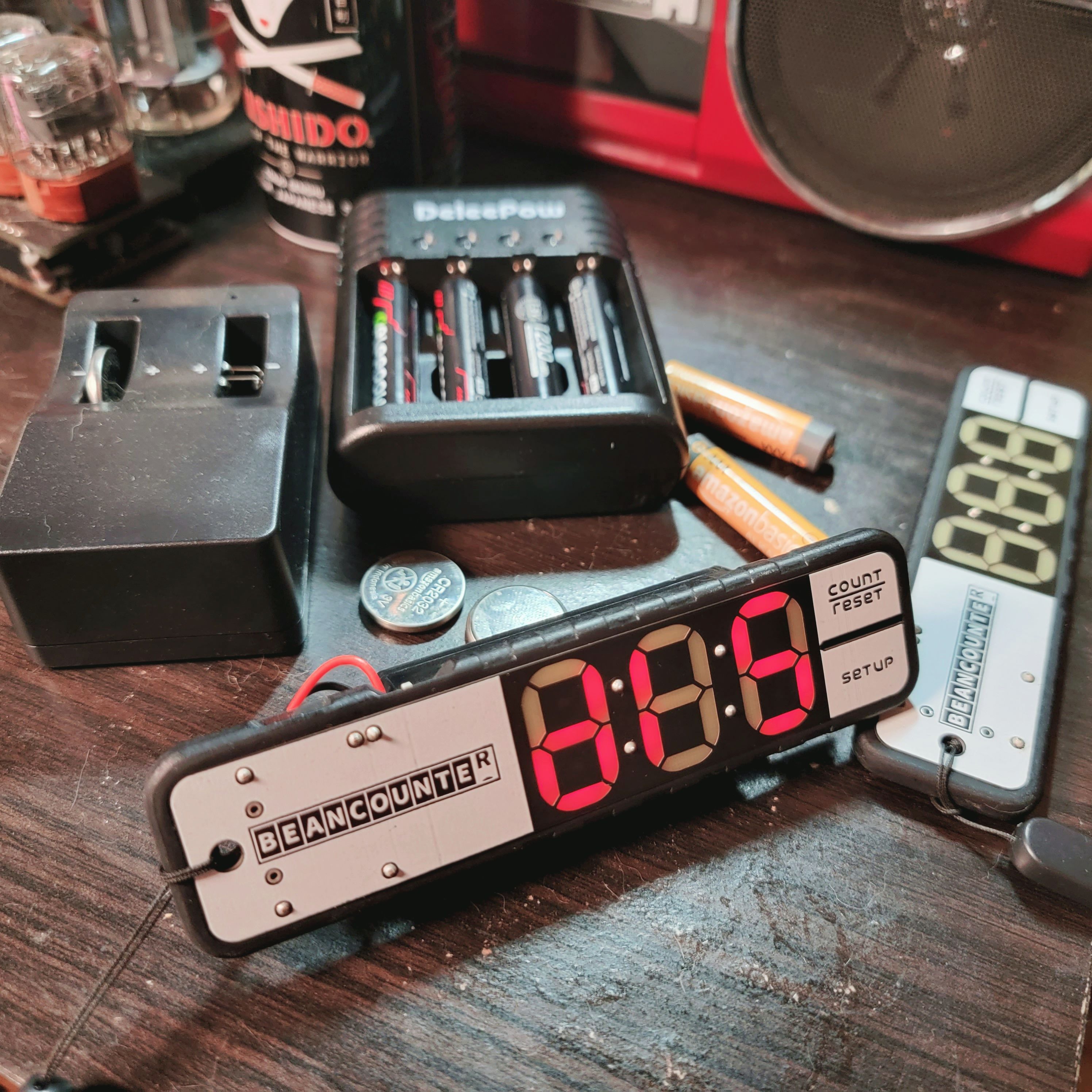Project update 2 of 10
Funded in Under 24 Hours, Answers to Questions About Battery Life
by Nick PThanks to the flood of interest in BeanCounter, we were able to meet our funding goal on launch day! This means we’re going to production, and I can’t tell you how excited I am to find out what a box of a few hundred BeanCounters looks like. Thank you again to everyone who made this campaign successful right out of the gate.
Because I’m offering both standard and "BUBU" versions of BeanCounter, I’ve already gotten a few questions regarding battery life. In response, I’ve done some practical battery-life testing and I’ll be sure to add a small blurb to the campaign page for future backers. In the meantime, here’s what I found out:
When BeanCounter is turned on but not in counting mode it draws about 15 mA to run the microcontroller and the display. When you start counting in Inventory Mode (using one IR LED) that goes up to about 18 mA. In Dispense Mode (both IR LEDs are on) it goes up to about 21 mA. These numbers suggest a reasonably long runtime even from very small cells (like 2032 coin cells) but the reality is that once the system voltage drops to around 2 V, the count can become unreliable—more on that in a moment—and so we can really only use part of the battery’s rated capacity. To be fair, this is true of most consumer electronics.
To determine the practical battery life, I just put some fresh batteries in my prototype BeanCounters and tested them periodically. What I found is that a brand new Amazon Basics 2032 lithium cell will last about 4 hours of continuous use in Dispense Mode. This means BeanCounter stayed powered on and "counting" for 4 hours straight. If you’re only booting up BeanCounter a few times a week to count a piece of tape here and there, that may last a long time. If you’re doing inventory on a big haul of partial reels from the swap-meet, it may not do the trick.
The BUBU upgrade, with two fresh Amazon Basics Alkaline AAA batteries will last upwards of 43 hours of continuous operation. I say ‘upwards of 43 hours’ because, as I’m writing this, that’s how long the unit on my bench has been running. Judging by the capacity difference, I would expect a pair of AAAs to last about 8-12 times as long as a coin cell, and so far that seems to be the case.
Still, if you plan to use BeanCounter every day to keep inventory or to pick tape for shipping, I recommend using a rechargeable battery. I’ve tested both rechargeable 2032 coin cells and rechargeable AAAs, and both work well, with runtime comparable to their non-rechargeable counterparts.
Now, about the unreliable counts at low voltage, this is a bug that I’m just discovering. It is possible for the battery to get low enough that, although the controller is still running and the display is dimly visible, something in the IR emitter / IR phototransistor / ADC signal chain starts misbehaving. This means it’s possible to get a bad count. My initial instinct was to set the controller’s internal brown-out detection to shut down the unit before this could happen, but this can have other undesirable effects. What I’ve decided to do instead is to write a very short self-test routine that BeanCounter will run whenever the count is reset. This self-test routine will flash the IR LEDs and check to make sure it "sees" the flashes, essentially doing a virtual count. If this fails for whatever reason, it’ll warn you by displaying "Err."
Well that’s all I’ve got for this week, but if you have any questions or concerns, feel free to send me an email at Nick@GreatBigFactory.com, tweet at me (@northallenpoole), or send a question via the "Ask a technical question" link on the campaign page.
Cheers,
Nick

